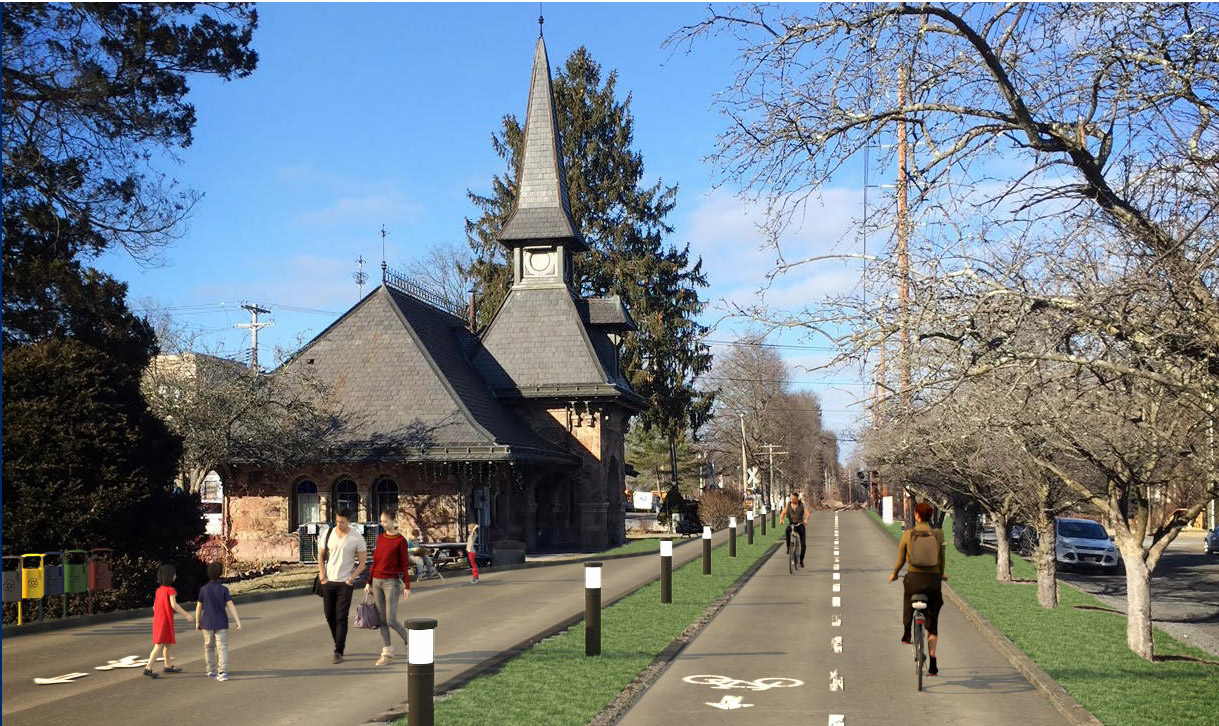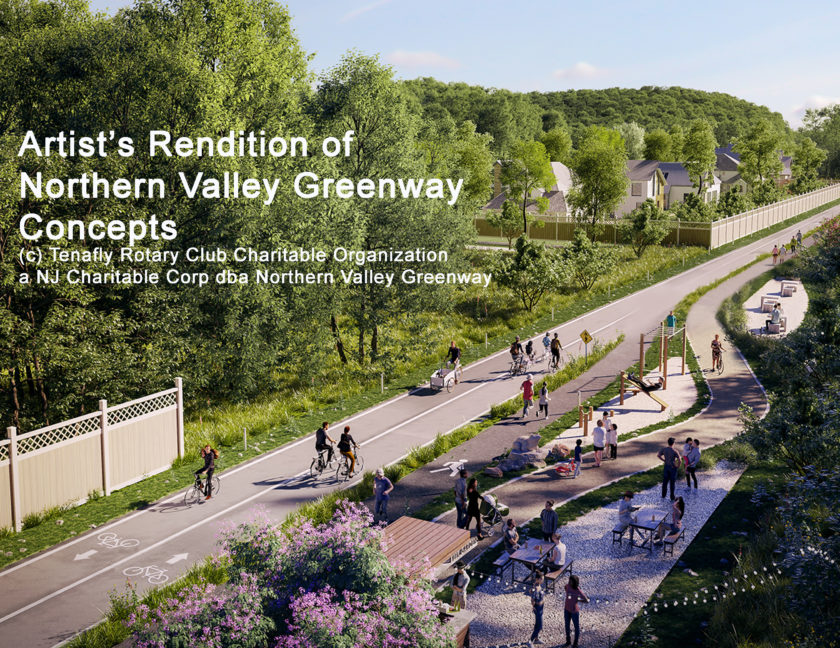
NORTHERN VALLEY AREA, N.J.—Advocates for a Northern Valley Greenway will be presenting a consultant’s technical report laying out three alternative plans for a greenway at town council meetings beginning this week.
At least three public presentations will occur beginning Sept. 10 in Northern Valley Greenway “core towns” to discuss findings from a transportation consultant’s planning study—a study that found a greenway was “generally feasible” but laid out a wide range of future tasks and potential obstacles that need to be overcome.
Andrew Mikesh, team leader for the interlocal Northern Valley Greenway committee, said representatives from the committee will be offering highlights of the 222-page technical report at six separate presentations starting Tuesday, Sept. 10 before the Tenafly Borough Council.
The report was prepared by NV5, a planning consultant hired by the state Department of Transportation in August 2018 to determine whether a greenway was technically feasible and to do initial planning for the effort, said Mikesh.
Other presentations will follow Sept. 11 before councils in Norwood and Closter, and on Sept. 23 in Demarest, said Mikesh. Presentations in Northvale and Cresskill are yet to be confirmed, he said.
When Northern Valley Press contacted Republican legislators recently who supported the greenway idea during its initial kickoff last August, supporters including state Sen. Gerry Cardinale, state Assemblywoman Holly Schepisi, and state Assemblyman Robert Auth, boasted of greenway benefits. Also, Schepisi and Auth said they would help advance the greenway by helping to locate sources of funding, including federal, state and county funds and grants, as well as requesting a special state appropriation for the project.
‘100 percent’ support
“I support it 100 percent; it’s a wonderful thing. If it does nothing more than get the bikes off of Rt. 9W, it’ll be great,” said Tenafly Mayor Peter Rustin Aug. 5.
Rustin said he would “like to see it as a county park” because Bergen County as a whole would benefit from such a greenway.
“For our downtown and a lot of downtowns, I see it as a real shot in the arm,” he added.
Of course, he said, the “800-pound gorilla in the room remains the funding.”
“I think the group [greenway committee] is doing a great job,” said Norwood Mayor James Barsa.
He said the committee should consult with other greenway groups who have made similar efforts a reality.
“I hope it happens, I think it will happen. I believe that a lot of people are behind it,” he added.
“Obviously it’s a great project and it would be great for all of us,” said Closter Mayor John Glidden. “Now you have an empty waste of space there, and you can do something with it like put a greenway and a bike trail and really improve the downtowns of at least six towns.”
He said even though a greenway would take a lot of time, he noted the railroad line has been out of use since the 1960s and would likely not be put back in use.

Report due for release
The technical report’s release this week is sure to kick off local discussions of both the pros and cons of a future greenway, along with the project’s overarching question: how to secure funding to purchase the unused CSX rail line that greenway planners hope to convert into a safe and secure pedestrian pathway for active and passive recreation.
The greenway effort initially began four years ago when a teenager sent a letter wondering if the unused CSX rail line corridor might be repurposed into a greenway for safe bicycling after the death of another teenager killed by a truck while riding his bicycle in Cresskill.
The 222-page report did not identify any potential fatal flaws that would prohibit conversion of an unused CSX rail line.
Three options detailed
It also defined the project and detailed three possible options, along with identified paths for proceeding on a multi-year effort to build a greenway for bicyclists, pedestrians and joggers, according to people who have seen the report.
The three alternatives include: a greenway and linear park, also called a “separate-speeds path”; which was preferred by most attendees at a March 2019 public input session; a shared-use path, which is a singular path shared by bikers, joggers and pedestrians; and a rail-with-trail path, which is the least-favored option.
The report notes potential obstacles to a greenway that need to be overcome, including 17 street crossings (five signalized, 11 unsignalized, and one off-road) that fall within different jurisdictions (nine local and eight in Bergen County), according to people involved in greenway planning.
The report also highlights environmental constraints in each town and identifies environmental permits likely to be needed before construction begins, including wetlands, floodplains, stormwater management, historic preservation, and soil erosion control permits.
